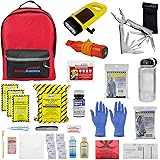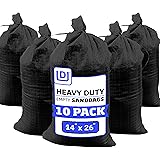Table of Contents
- Conducting a Risk Assessment
- Creating an Emergency Communication Plan
- Assembling an Emergency Supply Kit
- Implementing Training Drills and Exercises
Conducting a Risk Assessment
When you’re looking to build a solid emergency preparedness plan, the first step is conducting a thorough risk assessment. This helps you understand the types of emergencies you might face. From natural disasters to man-made incidents, knowing potential threats lets you tailor your preparedness plan to best handle them.
Understanding Your Environment
Consider your geographical location. Are you in an area prone to earthquakes, hurricanes, or wildfires? Each of these events requires different preparation strategies. Knowing your landscape will help you focus on the most likely scenarios.
For instance, if you live near the coast, preparing for hurricanes and storm surges should be a priority. On the other hand, if you’re inland, tornadoes might be more of a concern. Local environmental factors can heavily influence the specific risks you face.
You should also consider man-made risks. Proximity to chemical plants or major infrastructure can introduce unique challenges. What would you do if there were a hazardous spill or an industrial accident?
Identifying Potential Hazards
Once you have a handle on your environmental risks, it’s time to broaden the search to other potential hazards. This may include anything from a power outage to a home invasion. Think critically about what could go wrong in various scenarios.
Brainstorming sessions with family or team members can help identify hazards you might not have considered. Their insights can add valuable perspectives to the overall assessment, ensuring you have a comprehensive view of possible emergencies.
I found it really helpful to map out these hazards visually. Creating a chart or list of potential emergencies can make it easier to spot gaps in your current preparedness plan and guide your next steps.
Analyzing Historical Data
Looking at historical data gives you insight into what has happened before and what might happen again. Check records of past events and emergency responses in your area. This historical context can inform your risk assessment.
== > What if ... Get a FREE Subscription to PREPARE
Local government websites often have resources detailing past emergency events and response plans. Utilize this information to fine-tune your assessments based on past occurrences. The better data you have, the more accurate your risk evaluation will be.
Personally, I found that speaking with long-time local residents provided invaluable advice on what to prepare for. Their firsthand experience often includes practical tips you won’t find in official reports or data.
Creating an Emergency Communication Plan
Effective communication is crucial in any emergency. A well-laid-out communication plan ensures that everyone knows what to do and who to contact. Here are a few key strategies to keep everyone connected and informed.
Establishing Communication Channels
First off, decide on the primary communication channels. These might include phone calls, text messages, emails, or even social media. Each channel has its strengths and weaknesses, so choose based on the nature of the emergency.
It’s essential to have multiple backup methods. If the power goes out, relying solely on email won’t cut it. Think of alternatives like battery-operated radios or walkie-talkies. Diversifying your communication tools ensures you remain connected.
In my experience, it’s helpful to test these channels periodically. Regularly updating contact information and ensuring everyone knows how to use the equipment can save valuable time when it counts most.
Designating Roles and Responsibilities
Make sure everyone knows their specific roles during an emergency. This clarity can reduce panic and ensure that the right actions are taken swiftly. Assign someone to handle communications, another to prepare supplies, and others to check routes and safety measures.
Writing down these roles and responsibilities can be tremendously helpful. A written emergency communication plan that outlines each person’s duties makes sure everyone is on the same page.
From personal experience, I found that assigning roles based on strengths and abilities makes everything run smoother. Try to give people tasks they are comfortable and competent with to maximize efficiency.
Setting Up Meeting Points
Establish primary and secondary meeting points for your family or team. These should be easily accessible locations where everyone can gather in case of an emergency. Having a place to regroup helps ensure everyone is safe and accounted for.
Coordinate with neighbors or nearby friends for support. It’s always good to have a backup plan and additional support systems in place if Plan A fails. Community cooperation can significantly bolster your emergency preparedness.
Test your routes to these meeting points. You want to make sure everyone is familiar with how to get there, even in the dark or under stress. Regular drills help solidify this knowledge.
Assembling an Emergency Supply Kit
Preparing an emergency supply kit is one of the most tangible steps in building an emergency preparedness plan. Having the right supplies can make all the difference when an emergency strikes.
Essential Supplies and Tools
Let’s start with the basics. Ensure you have enough food and water to last at least three days. Non-perishable items are crucial here – think canned goods and bottled water. Rotate these supplies periodically to maintain freshness.
You’ll also need a first aid kit, flashlights, batteries, and a multi-tool. These basics can help you manage minor injuries and navigate your home in the dark. Prioritize items that have multiple uses to maximize your preparedness.
In my kit, I also include personal items like eyeglasses, medications, and copies of important documents. Personalizing your kit ensures it meets the specific needs of your household.
Safety and Comfort Items
Your supply kit should also include items to keep you safe and comfortable. Blankets, sturdy shoes, and weather-appropriate clothing can make a difficult situation more bearable. Don’t forget hygiene products like soap, toothpaste, and sanitary wipes.
Including items for communication and information is crucial. A battery-operated or hand-crank radio keeps you updated on emergency developments. Chargers or power banks for your devices are also essential.
Personally, I always add a few comfort items like books, cards, or small games. These can be a great way to pass the time, especially if you have children or need to stay mentally occupied.
Pets and Special Needs
If you have pets, make sure to include their needs in your emergency kit. This might mean extra food, water, and any medications they require. A pet carrier or leash is also essential for safe transport.
Consider the special needs of all family members. Infants may need formula and diapers, while elderly family members might require specific medical equipment. Customize your kit to ensure everyone’s needs are met.
From my perspective, it’s always better to over-prepare. The peace of mind that comes with knowing you have what you need is well worth the effort and investment.
Implementing Training Drills and Exercises
You can have all the plans and supplies in the world, but if you haven’t practiced, it could all fall apart in an emergency. Conducting regular training drills is essential to ensure everyone knows what to do.
Regular Practice Sessions
Set up regular practice sessions where your family or team can go through the steps of your emergency plan. Repetition ensures that everyone understands their roles and can execute the plan without hesitation.
These drills can include everything from evacuation procedures to communication checks. Regular practice helps identify any weaknesses in your plan and provides the opportunity to make necessary adjustments.
From personal experience, I suggest making these drills as realistic as possible. Simulate different scenarios and challenges to test how well your plan holds up under various conditions.
Updating Training Based on Feedback
After each drill, gather feedback from everyone involved. Discuss what went well and what could be improved. This feedback loop is crucial for refining your preparedness plan over time.
Use this information to update your plan and practices. Flexibility and continuous improvement are key. The more you refine your approach, the better prepared you’ll be when an actual emergency occurs.
It’s incredibly beneficial to involve every family member in these discussions. Different perspectives can provide insights you might not have considered and contribute to a more robust emergency plan.
Incorporating Community Resources
Finally, look beyond your household. Community resources like local emergency response teams, disaster preparedness workshops, and public safety forums can offer valuable insights and support.
Connecting with your neighbors and local officials can help you understand broader community strategies and how they integrate with your personal plan. Mutual aid can significantly enhance your preparedness.
Getting involved in community preparedness initiatives has been one of the best steps I’ve taken. It not only strengthens my plan but also builds a network of support that can be invaluable in an emergency.
Frequently Asked Questions
1. Why is conducting a risk assessment the first step in building an emergency preparedness plan?
Conducting a risk assessment helps you understand the specific types of emergencies that could impact you. By identifying hazards, you can tailor your preparedness efforts to the most likely risks and ensure your plan is comprehensive.
2. What are the key components of an emergency communication plan?
Key components include establishing communication channels, designating roles and responsibilities, and setting up meeting points. These ensure that everyone knows how to stay in touch and what to do during an emergency.
3. Why is it important to practice training drills regularly?
Regular training drills help ensure that everyone knows the plan and what their role is during an emergency. Practice helps identify weak spots and gives everyone the confidence to execute the plan effectively when it counts.
4. How can community resources enhance your emergency preparedness plan?
Community resources provide additional support and information. Connecting with local emergency services, participating in local preparedness workshops, and working with neighbors can significantly bolster your preparedness efforts.






